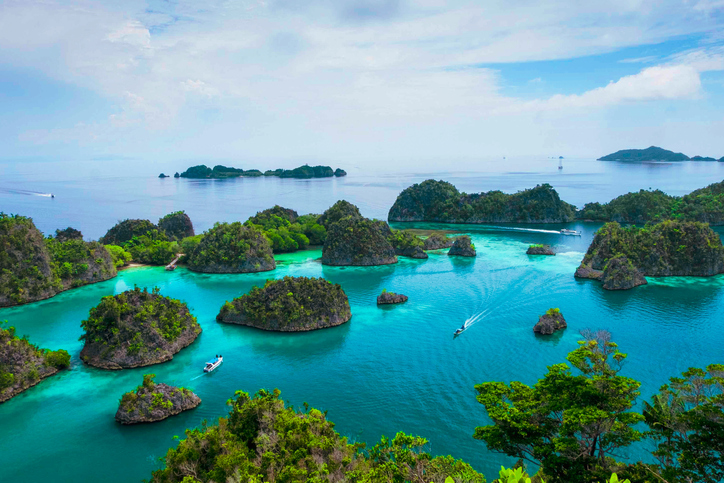Identifying the biggest island in the world is surprisingly more complex than it sounds, but the answer itself is clear: Greenland is the largest island on Earth, a landmass immense in scale, sparse in population, and rich in geological and cultural significance. Many searchers look up “the big island in the world” expecting only a name, yet what they require is context the kind that explains why Greenland holds this title, what defines an island, and how this massive territory fits into global history, climate, and identity. This article aims to provide a deep, updated exploration of the world’s largest island, written with a level of clarity and detail suited for readers who want more than a simple definition.
Why the World’s Largest Island Still Surprises People
For generations, geography textbooks have listed Greenland as the world’s largest island an expansive stretch of ice-blasted coastline and rugged interior that has shaped myths, exploration routes, colonial claims, and climate research. And yet, despite the familiarity of its name, Greenland remains misunderstood. Many imagine it to be an Arctic monolith locked in eternal winter. Others assume its size has been exaggerated or think continents like Australia belong in the same category. Still others search for the “big island in the world” because the phrase appears in quizzes, riddles, and school assignments where the nuance is rarely explained. The truth is that Greenland is not only the largest island but also one of the most geographically and culturally unique territories on the planet. Its status emerges from a combination of scientific definitions, political history, and the dramatic contrast between its frozen landscapes and the human communities that persist along the coasts.
This article explores that story in full its geography, its people, its climate, its economy, its myths, and why it continues to hold global attention in a time of rapid environmental change. All facts are presented in an expanded narrative intended to be digestible, informative, and rooted in easy-to-read English.
What Makes Greenland the Largest Island?
To understand why Greenland holds its title, you must understand the definition of an island. The term “island” describes a landmass completely surrounded by water that is not large enough to be considered a continent. It sounds simple but leads to frequent confusion, especially when people compare Greenland to Australia.
Australia is continent-scale. Greenland is not.
This classification isn’t arbitrary; it is geological. Australia has its own tectonic plate and diversified landforms distinct enough to qualify as a continent. Greenland, though enormous, sits on the North American tectonic plate and does not meet the scientific criteria for continental status. Therefore, it remains by definition the world’s largest island.
Clear Comparison of the World’s Largest Islands
Below is an expanded, easy-to-read table displaying Greenland’s size compared with other major islands and explaining why only one holds the title.
Island Name Location Approximate Area Status Description
Greenland Arctic/North Atlantic Largest island Not a continent; entirely surrounded by water
New Guinea Pacific / Oceania Second largest Shared by two nations; heavily forested and diverse
Borneo Southeast Asia Third largest Divided among Indonesia, Malaysia, Brunei
Madagascar Indian Ocean Fourth largest Unique biodiversity; isolated off East Africa
Baffin Island Arctic Canada Fifth largest Cold, rugged terrain; sparse population
Sumatra Indonesia Sixth largest Known for volcanoes, dense rainforests
Honshu Japan Seventh largest Japan’s main island; densely populated
Victoria Island Arctic Canada Eighth largest Ice-dominated landscapes; minimal habitation
Great Britain Europe Ninth largest Politically significant; rich history
Ellesmere Island Arctic Canada Tenth largest Harsh climate; important for climate research
This table underscores how dramatically Greenland outscales every other island, even though most people encounter it mainly through distorted map projections or passing references.
The Geographic Personality of the World’s Largest Island
The geography of Greenland possesses a duality rarely found elsewhere: an intimidating landmass cloaked in ice, yet marked by pockets of surprising beauty along its coasts. Nearly 80 percent of the island is covered by an ice sheet that reaches depths that challenge human imagination. Cities and settlements exist only along narrow fringes where fjords, fishing harbors, and modest patches of green tundra allow for habitation. Greenland stretches across a staggering range of latitudes, meaning it experiences midnight sun in summer and polar nights in winter. Its mountains are sharp and ancient. Its waters support whales, seals, and Arctic fish species. In short, Greenland is not merely an island; it is a geological chapter that the planet continues to write.
A History Written in Ice, Wind, and Human Persistence
Greenland’s human history is a study in endurance. Indigenous Inuit peoples migrated here long before European contact, crafting lives around the rhythm of sea ice, animal migrations, and long winters. Their survival techniques kayaks, harpoons, clothing adapted for −30°C winds represent some of the greatest human innovations in extreme environments. Then came Norse settlers, driven by exploration and curiosity, who built small communities that eventually disappeared under mysterious circumstances. Later, European powers took interest not only for trade but for strategic positioning during eras of global conflict.
What makes Greenland’s history compelling is how it intertwines indigenous resilience with external ambitions. The island is not merely large; it has been, for centuries, a destination of fascination, misunderstanding, and geopolitical maneuvering.
Climate: A Harsh Instructor of Life and Landscape
The climate of Greenland defines nearly every aspect of existence. Winters reach temperatures that freeze sea spray mid-air. Summers offer brief warmth that barely nicks the ice sheet’s edges. Storms sweep across the island with relentless consistency. And yet, even within these extremes, life thrives. Mosses bloom in short bursts of color, reindeer forage across tundra plains, and migratory birds create nesting colonies along cliffs. The Arctic climate is not just a subject of academic interest it is a global indicator. Greenland’s ice melt contributes to rising sea levels, meaning that understanding this island’s climate is understanding an early warning system for planetary change.
The Economic Reality of the Biggest Island in the World
Greenland’s economy has historically centered on fishing, small-scale hunting, and mineral exploration. But its future relies on modern navigation routes, tourism, and the potential of natural resources. Melting ice though dangerous has opened shipping channels that could reshape global trade. Tourists, drawn by glaciers and northern lights, bring seasonal economic boosts. And the search for minerals mirrors global demand for technology and renewable energy components. Yet economic development comes with debates over environmental protection, indigenous rights, and political autonomy. Greenland’s size makes it rich in potential, but its environment demands careful stewardship.
Culture in the Far North: Voices and Traditions Shaped by Ice
Greenlandic culture blends Inuit heritage with Danish influence. Traditional hunting practices coexist with modern livelihoods. The Greenlandic language, vibrant and deeply expressive, adapts to new media and storytelling forms. Music, dance, and community life flow around shared experiences of long winters, short summers, and the steadfast relationship between people and land. Festivals illuminate the darker months. Storytelling preserves ancient journeys and spiritual beliefs. And across villages, communal bonds remain central to surviving challenging conditions.
Why the World Still Looks to the Largest Island for Answers
Greenland is often portrayed as isolated, yet its importance is global. Climate scientists study its ice cores to understand past atmospheric conditions. Governments track its coastlines for new shipping routes. Environmental groups monitor its wildlife patterns as indicators of broader ecosystem changes. In this way, the world’s largest island serves as a barometer of both human impact and natural resilience.
A Modern Perspective: How People Imagine the Biggest Island Today
Culturally, Greenland appears in literature, documentaries, climate reports, and political commentary—but often as a symbol rather than a real place. Maps distort it. Narratives simplify it. And many still imagine it as an empty sheet of white.mBut modern Greenland is multifaceted: digitally connected, politically active, culturally rich, and increasingly significant in global decision-making. To understand Greenland today requires acknowledging the tension between its icy solitude and its growing presence in public consciousness.
Conclusion
When people search for “the big island in the world,” they want more than a name—they want clarity. Greenland’s position as the world’s largest island is rooted in science, geography, and centuries of human exploration. But its true significance goes far deeper. It is a landmass that reshapes weather patterns, preserves historical memory in layers of compacted snow, and challenges the limits of human adaptability. Understanding Greenland means understanding a living chapter of Earth’s story, one that continues to unfold in real time.











